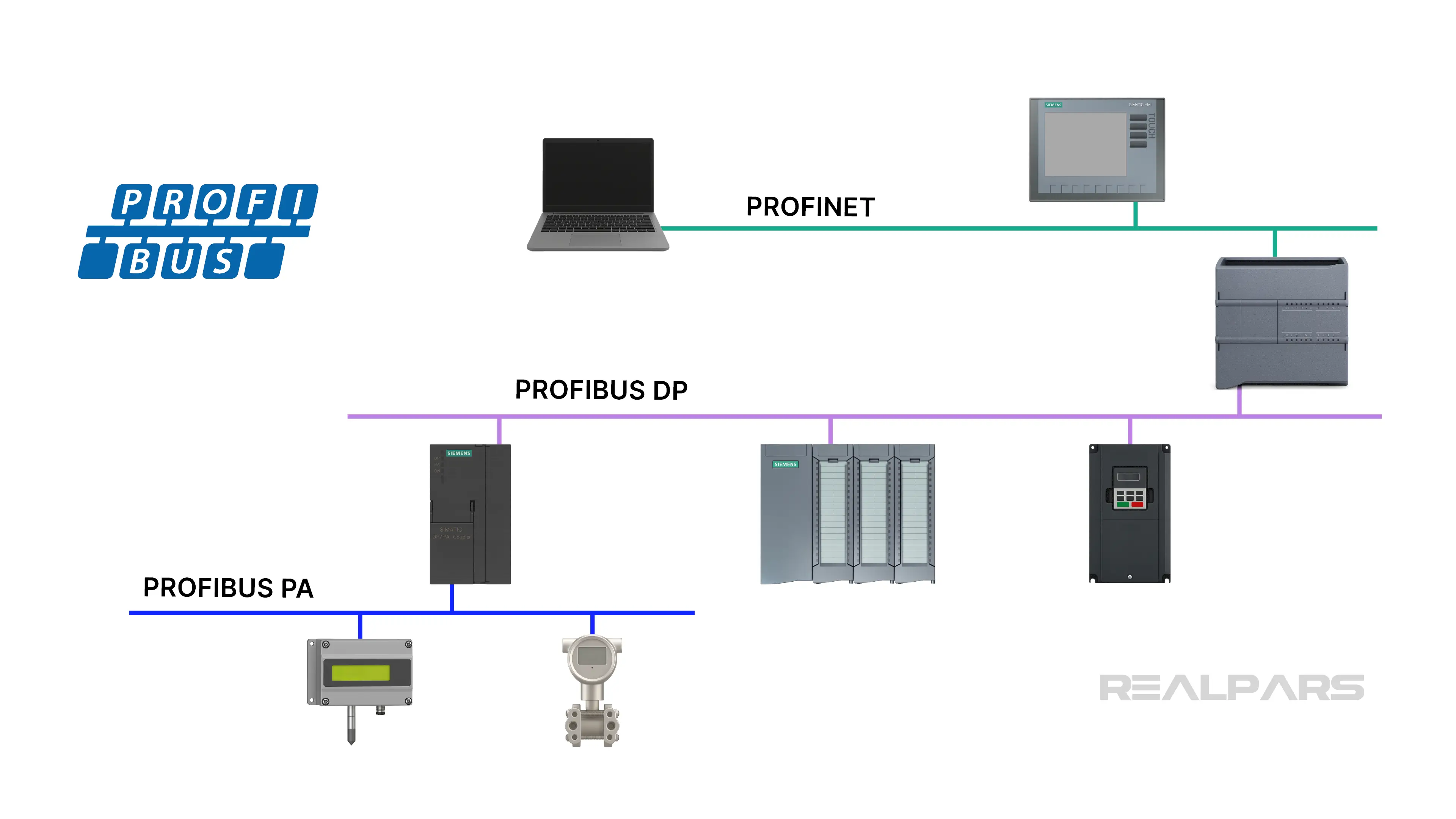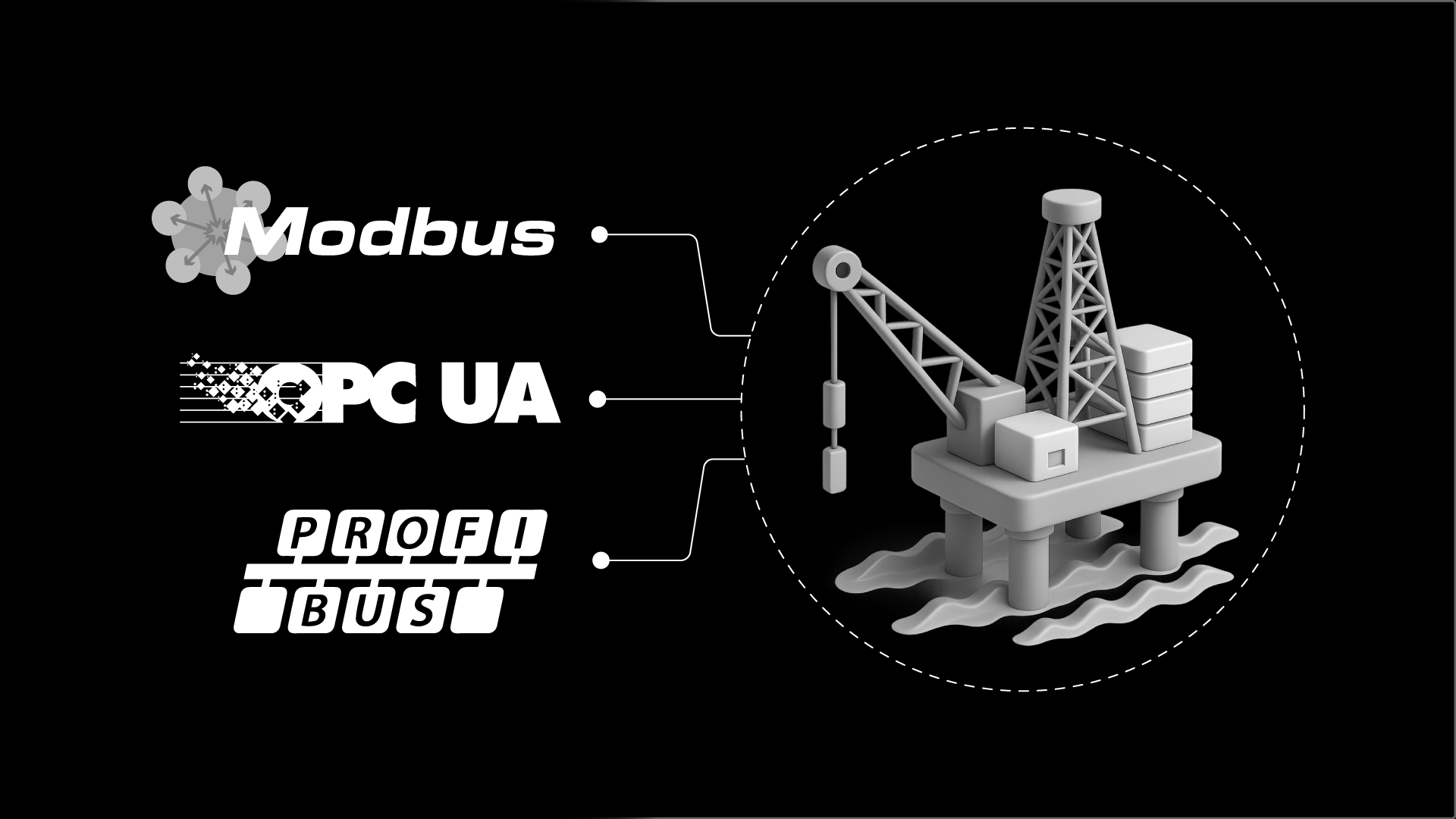The oil and gas industry is a thriving industry that provides gasoline, natural gas, heating oils, and petrochemicals used in making thousands of products we use every day.
It takes a lot of coordinated processing steps to extract oil and gas from a well and to refine it into these useful products.
Have you ever wondered how these sensors and devices are able to communicate and process data to the controllers and systems needed to perform these critical tasks?
The answer is industrial communication protocols. These communication protocols, such as Modbus, Profibus, and OPC UA, provide the pathway for data from the wellhead sensors and devices to the controllers, control rooms, and data historians that allow operators to perform these processing steps reliably, efficiently, and safely.
In this article, I will explore how these industrial communication protocols allow automation engineers to construct systems that are able to extract the most data from the sensors and devices at the jobsite, whether at a well head, on a platform rig, or in the refinery.
I will present real-world examples of how communication protocols are used in this important industry.
The importance of communication protocols in oil and gas automation
Industrial communication protocols provide the vehicle for sensor and device information to be shared with controllers, operator monitoring systems, and even other sensors and devices.
These communications enable pipeline monitoring, refinery controls, and wellhead operations, just to name a few. Communication protocols allow for the structured collection and storage of sensor and operational data.
These data are used for many purposes, including monitoring, alarming, and maintenance.
Modbus: the foundation of industrial communication
Modbus is a simple, open data communication protocol developed by what is now Schneider Electric in the late 1970s.
Although specifically designed for use with its own PLCs, it has become widely used as a general communication protocol for communicating between control system components, such as remote I/O processors, analyzers, scales, as well as PLCs.
Modbus uses a client/server architecture and can be used with various communication protocols, including TCP/IP. One Modbus network can support up to 247 devices.

The protocol provides read/write capability for single input and coil output bits, as well as read/write capability to 16-bit word addresses.
The master (client) controls the flow of data to and from multiple slave ( server) devices. Communication can take place over a serial multi-drop RS-485 bus or via Ethernet TCP/IP.

In the oil and gas industry, Modbus is most often used to: 1) communicate from central control centers to remote sensor terminal units, called RTUs, 2) for integration of control components, such as controllers and PLCs into SCADA systems, and 3) for integration of analyzers and lab equipment.
Even after 40 years, Modbus remains a popular communication protocol due to its simplicity, ease of configuration, and low cost of implementation. Modbus protocol is scalable, thanks to the ability to use Modbus over Ethernet, called Modbus TCP.
Even with these advantages, Modbus is not as fast or as scalable as other, more modern protocols. The serial version of Modbus does not have any built-in cybersecurity features, so its use is typically reserved for systems without outside network access points.
To learn more about this communication protocol, you can check our blogs about What Is Modbus? and How Does Modbus Communication Protocol Work?, which are linked in the description below.
OPC UA: the evolution of connectivity
OPC-UA is an advanced protocol designed to provide data services over TCP/IP. OPC was developed in 1994 as a method for applications on two computers to communicate with one another.
Several different versions of OPC were created: one to access continuous data, one to access historical data records, and one to retrieve alarm and event data. Over the years, OPC was improved, and today, we have OPC UA, a single unified architecture that supports all forms of data exchange.
Since OPC UA is supported on TCP/IP, all of the security features offered in a TCP/IP environment are available to OPC UA. OPC UA is interoperable between any TCP/IP device, making it completely platform independent.
As with Modbus, OPC UA is built on a client/server architecture. It is highly scalable and allows for complex data modelling and collection of data at various rates and with data quality markers.
In oil and gas installations, OPC UA is used for real-time data collection and monitoring between multiple systems and locations.
It can be used with cloud applications that provide data analytics and can access remote locations through wireless network connections, or locally between control rooms and field controllers and applications.
OPC UA offers robust security built into the protocol, which is essential for use with remote and cloud applications. Because the protocol is built as a TCP/IP service, OPC UA will be able to grow and adapt with advances in Ethernet technologies, making the OPC UA architecture highly future-proof.

On the downside, OPC UA is much more complex than Modbus and other protocols, so additional training and experience are needed to properly implement the protocol. With complexity comes a slightly higher cost, mainly due to software costs, protocol configuration, and application development.
Profibus: high-performance communication for field devices
Profibus is a widely used and important protocol for industrial communication in the oil & gas industry. Profibus is short for Process Field Bus and was developed in Germany in 1989.
Profibus is actually a family of three different, but very similar protocols.
Profibus PA is designed for communication with analog sensors.
Profinet is the TCP/IP version of Profibus, linking devices and processors at the high speeds of Industrial Ethernet protocols.
Profibus DP can communicate at various speeds from 6.9 kilobits/second up to 12 megabits/second, depending on the length of the Profibus segment.
Profibus PA communicates at only 31.25 kilobits/second but can be configured for use in hazardous areas.

Profibus DP is used in refinery operations to connect remote I/O processors, main CPUs, and complex devices such as VFDs. Profibus PA is used to connect process sensors and actuators.
In the oil field, the three Profibus protocols provide sensor-to-cloud communications for critical operating data. In many cases, this unified approach is preferred over Modbus, providing greater capability at the sensor level and comparable power at the TCP/IP level.
Profibus provides high-speed communication and reliability, with the added benefit of being suitable for installation in hazardous areas, such as oil and gas processes. In addition, OPC UA is able to operate over a Profinet network.
However, establishing a Profibus network is more expensive than Modbus due to the higher complexity of its hardware and configuration.
Summary
Many protocols are available to Automation Engineers designing systems for the oil & gas industry. The protocols best suited for the particular application should be used.
For hazardous classified areas, Profibus PA provides methods for intrinsically safe operation. Modbus provides simple, efficient, and reliable communication, but lacks robust cybersecurity features.
For the collection and transmission of large amounts of data and for integration with IIoT applications, OPC UA is the right choice. In reality, a combination of protocols can be used to take advantage of the strengths of each protocol.
Training of operators and maintenance personnel must be considered, as these are advanced communication protocols that require specialized training.
More trained technical personnel means less downtime. You can upskill your engineers and technicians with a RealPars Business Membership. Visit realpars.com/business and fill out the form to see if it’s the right fit for your team.

